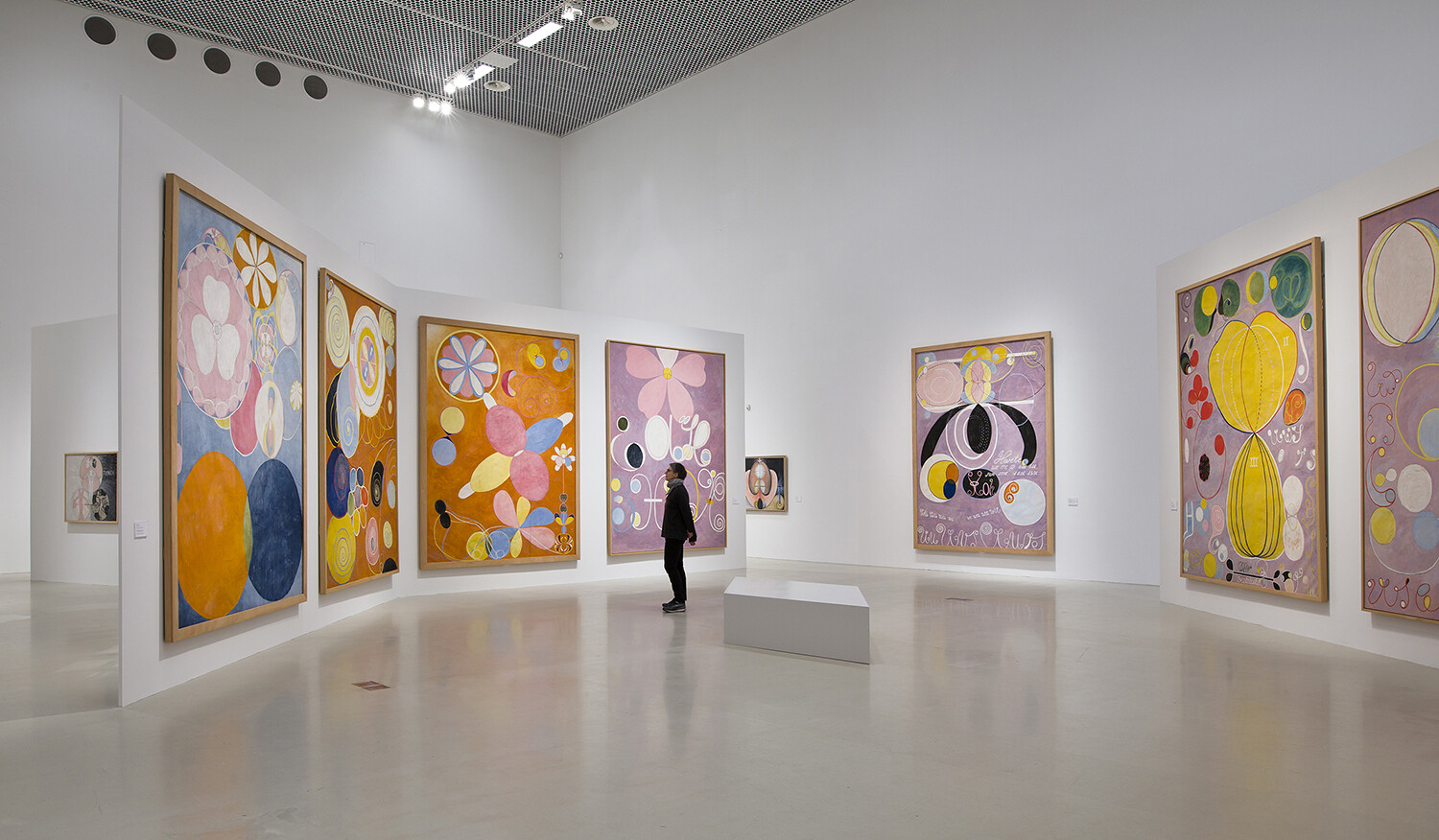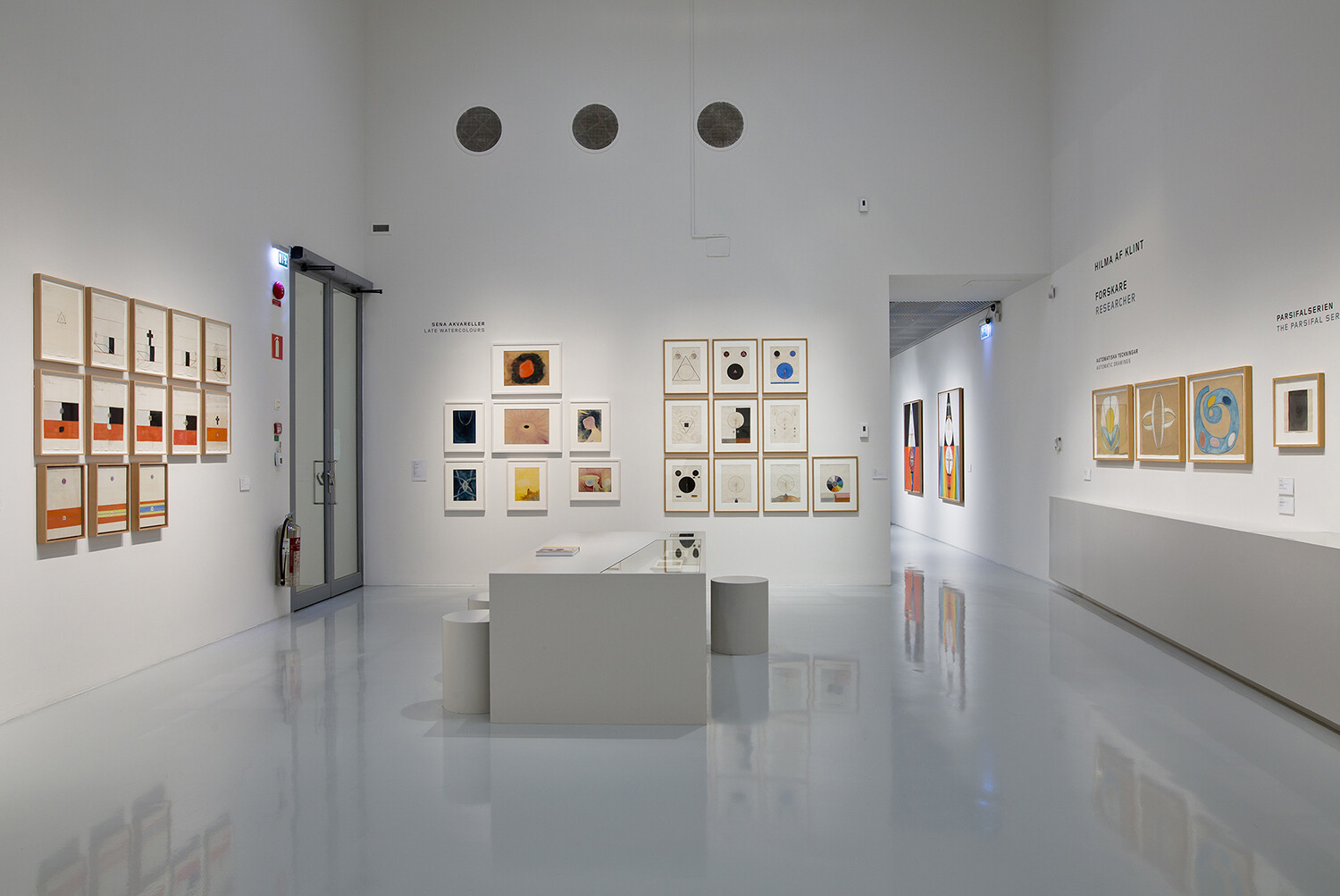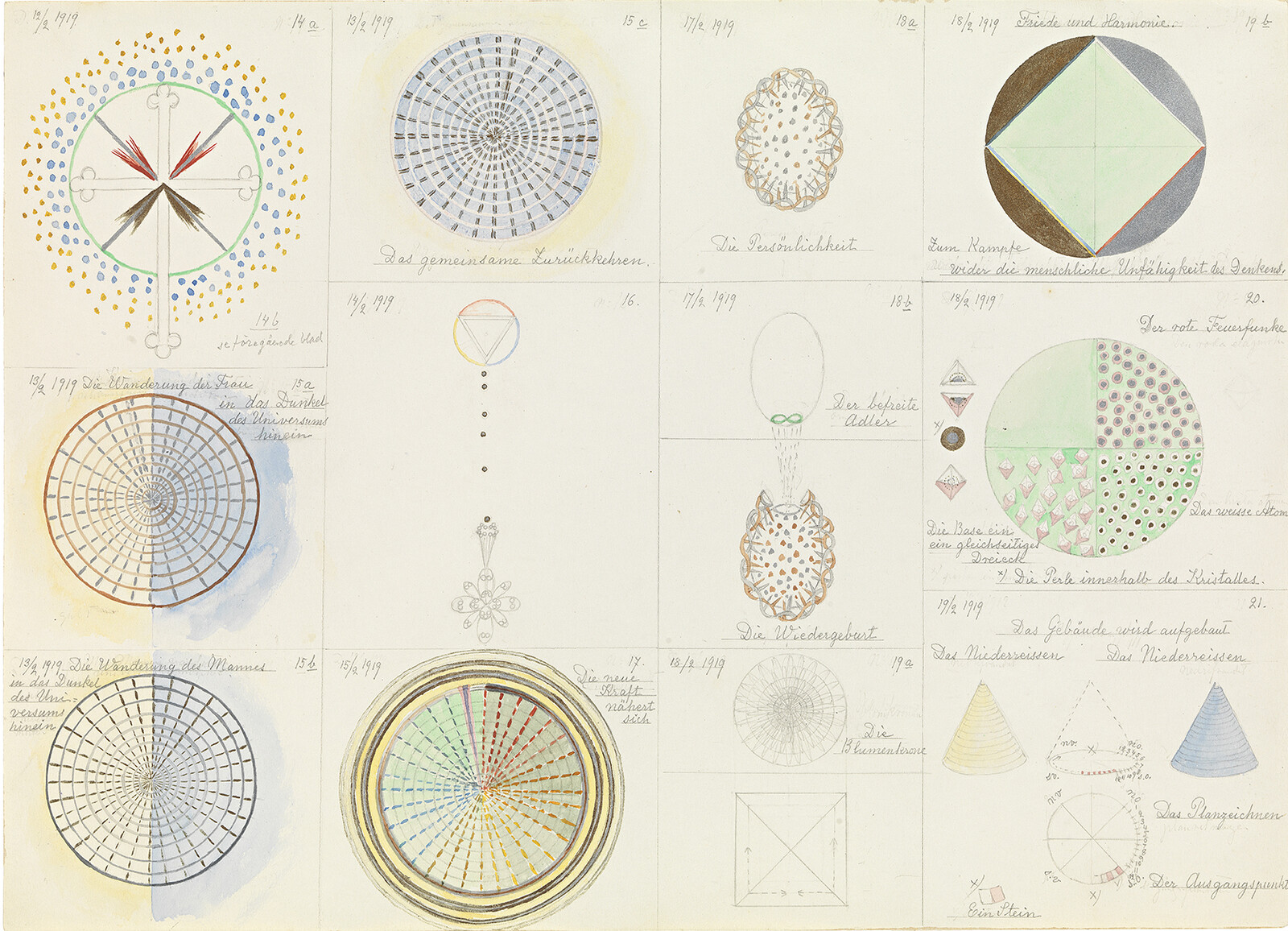Artist, Researcher, Medium
April 4, 2020–February 21, 2021
Ola Billgrens plats 2-4
SE-211 29 Malmö
Sweden
Hours: Tuesday–Sunday 11am–5pm,
Thursday 11am–7pm
Originally scheduled for April, Hilma af Klint – Artist, Researcher, Medium, finally opened at Moderna Museet Malmö on June 16 and is extended until February 21, 2021. The exhibition further expands the understanding of this ground-breaking Swedish artist and researcher.
Hilma af Klint (1862–1944) left behind a comprehensive and visually striking oeuvre. Her abstract paintings are as powerful as they are enigmatic, captivating in their complexity, scale, and pictorial language. A radical pioneer of an art that abandoned the depiction of visible reality, the artist opened doors to new horizons at the beginning of the twentieth century. As early as 1906 she was developing an abstract imagery—several years before Wassily Kandinsky, Piet Mondrian, Kazimir Malevich, and František Kupka, who are still regarded as the forerunners of 20th-century abstract art.
A decade ago, Hilma af Klint was still known to relatively few people, and was mostly an artist’s artist. Interest in her work took off in 2013, when Moderna Museet in Stockholm opened the first retrospective exhibition of af Klint’s work entitled Hilma af Klint – A Pioneer of Abstraction, curated by Iris Müller-Westermann, assisted by Jo Widoff. The show toured to six other venues in Europe and generated tremendous international interest and new research. Now, seven years after the Stockholm exhibition, Moderna Museet Malmö is providing deeper insight into the artist’s systematic research and working method. The exhibition spans the artist’s entire career, emphasizing the Paintings for the Temple (1906–15), which the artist herself considered her most important work.
Hilma af Klint’s work was based on an awareness of a spiritual dimension to our existence. Her multifaceted oeuvre provides insight into the various dimensions of human existence in which microcosm and macrocosm mirror each other. The exhibition acknowledges that the three aspects of af Klint’s life and interests—artist, researcher, and medium—are key to revealing and understanding af Klint’s artistic practice. From 1906 onward, her work as an artist is inextricably linked to her parallel interests in a spiritual realm. Af Klint was convinced that she was in contact with higher levels of consciousness while she was painting. The exhibition argues that acknowledging the importance of this spiritual belief is essential to understanding the meaning behind her work.
Hilma af Klint’s fascinating works, which generate such an interest today, one hundred years after their creation, invite us on a journey into other dimensions—an inward journey, which is simultaneously also a journey outward, beyond. While af Klint stipulated that these abstracts works should not be shown until 20 years after her death, at the earliest, she wrote in one of her notebooks that a new age would eventually come, when women would take the lead. Presumably, she also thought that this would be the time when future viewers, whether men or women, would be open to and thus capable of receiving the fundamental knowledge transmitted through her work.
The richly illustrated exhibition catalogue brings together new perspectives on Hilma af Klint. Iris Müller-Westermann’s art historical overview of Hilma af Klint’s development as an artist, researcher and medium is complemented by Swedish scholar Hedvig Martin’s essay, which focuses on a close study of the early notebooks in which Hilma af Klint and her spiritual companions in the group De Fem recorded their meetings. In the conversation “Hilma af Klint, Theosophy, Higher Consciousness and the Unseen Universe,” Milena Høgsberg and Theosophy and Esotericism scholar Tim Rudbøg explore the influence of theosophical ideas on Hilma af Klint’s work in an era rich with the pursuit of spiritualism at the turn of the twentieth century. The catalogue also includes two voices from outside the field of art: physicist and scientific journalist, Ernst Peter Fischer, and spiritual teacher Anne Sophie Jørgensen, both of whom have spent their lives pondering the nature of energy from two different perspectives. The catalogue is available in the Moderna Museet Shop.
The exhibition is co-curated by Iris Müller-Westermann and Milena Høgsberg.
The exhibition is supported by The Barbro Osher Pro Suecia Foundation. The video series “2 Minutes about Hilma af Klint,” available on the Moderna Museet Malmö’s Youtube channel, is supported by the Veronica & Lars Bane Foundation.
Based on the recommendations from the Swedish Public Health Agency, the number of people inside the museum at any given time will be limited. All visitors, including journalists, are required to prebook tickets online in advance.






